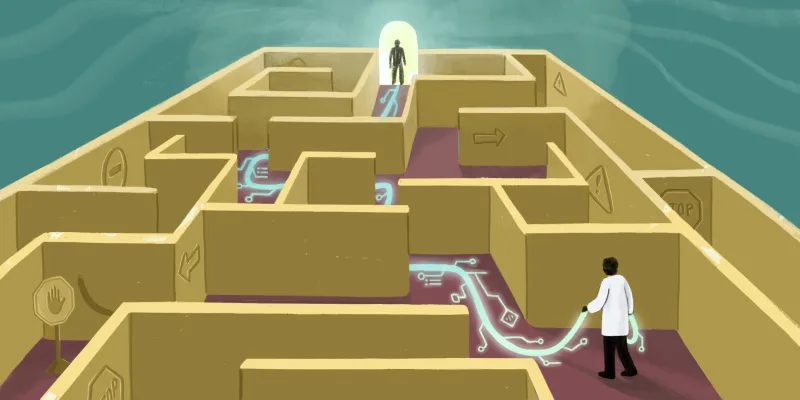For many EM physicians who do not have the luxury of working at an academic medical center or LVAD center with 24/7 on call cardiology/CVTS, the thought of a patient with a ventricular assist device (VAD) presenting with a mechanical complaint or in extremis can be a harrowing experience.
In the early 2000s when I first began to see VAD patients in the ED, these devices were mostly external, large, suitcase-appearing boxes with external hand pumps for emergencies or pump failures. As for its operation, frankly the family members were far more versed on the “emergent procedures” than I was. Slowly, the comfort level began to increase along with a subsequent decrease in the size of the devices. Now most of the components are internal with a few external lines, battery packs, and controllers. ACEP21 in Boston had a refresher on this topic presented by Dr. Cameron Berg and here are the highlights.
VADs were initially developed as a “bridge” or a temporary therapy to assist the heart for short periods of time until more definitive therapy could be administered such as transplant or resolution of the insult which necessitated the device. As technology and experiences with implants improved, “destination” or lifelong device use rose in prominence.
VADs, at their core, assist the failing ventricle and can be placed on either side, but for sure, the Left Ventricular Assist Device (LVAD) predominates. Initial devices attempted to replicate the normal and pulsatile flow of the native heart. However, these early generations had blood stagnation issues and clotting problems developed. Later generations began to use an impeller for more continuous and laminar flow, hence the perceived “pulseless” flow encountered on examination. Newer devices now utilize magnetic levitation to achieve a separation of the mechanical parts to aid in wear-related issues and hemolysis due to friction generated.
Until recently, there were two devices FDA approved for destination therapy, the Abbott HeartMate and Medtronic Heart Ware HVAD. Earlier this year, the Medtronic device was recalled for increased adverse neurologic events. Despite the recall, patients may still present to the ED with these devices.
Patients with VADs may or may not have a detectable pulse by traditional palpation or a detectable blood pressure using a regular, automated BP cuff. This is related to the nature of the VAD and how it produces flow. Native hearts have pulsatile flow, while VADs are more laminar in nature. It will depend on the patient’s underlying cardiac output as to which is more dominant. When the patient’s native heart has increased capacity to provide cardiac output, a pulse may be detected. However, when the VAD is doing most of the work, pulses may be diminished or absent. Doppler signal may determine a mean arterial pressure in these instances by auscultating for the initial flow of arterial blood as the cuff is deflated. One key element is that the heart is still subject to dysrhythmias as a cause of “loss of pulse.” So be careful and don’t always assume the pulse absence to be “normal.” Patients in whom pulses were previously present may lose this pulse detection as dysrhythmias can be the cause. Patients may be in ventricular fibrillation, but for the VAD, be conscious and talkative. Routine emergent care of the patient here is not affected by the presence of the VAD. EKGs, cardiac monitoring, and dysrhythmia treatments are similar to those non-VAD patients. Utilize ACLS protocols for the rhythm noted. Just because they are talking to you does not rule out a significant dysrhythmia present.
Complications are usually unrelated to the VAD but not always. Anticoagulation is frequently used in VAD patient but not always needed and possibly due to acquired Von Willebrand effects. This is postulate to be related to the platelet’s sheer effect in the pump. Dehydration, drive line infections, GI bleeding, or dysrhythmias can also result.
Look, listen, and feel to ensure pump function. Controller flow rates and pressure are read off the controllers, alarms, thrills, pump hum, and vibration can be utilized to confirm positive pump function. Confirm battery function, backup of alternative battery source and finally don’t forget to “phone a friend.” These patients are intensively managed so call the hospital system with whom they follow and expedite transfer to their system. You can’t call too early to transfer.
With respect to cardiac arrest in these patients, confirm they are in cardiac arrest. Do not rely on traditional means of pulse detection, or pulse-ox measures as these may not be detectable even when all is well. CPR is indicated in those in true cardiac arrest or those with severe signs of distress despite a functional VAD pump. Dislodgment of the pump is preferable to the alternative. Emergent transfer to the OR may be indicated if the VAD is newly placed or damage occurs as a result of the resuscitation process. ETCO2 of less than 20 mm Hg likely indicates a catastrophic event and need for CPR.
There are some newer emerging technologies to include fully implantable devices and wireless charging as exciting possible improvements. Technology will advance, that is for sure.
In summary, VAD patients may seem frightening at first, especially if you are remote, rural, or otherwise far from a tertiary care center. But remembering to take a systematic approach to the issues, you too can “mend a broken heart,” in this case the patient with a VAD.
Dr. Piel reports no conflicts of interest.
Image: Olena Chernenka / gettyimages







